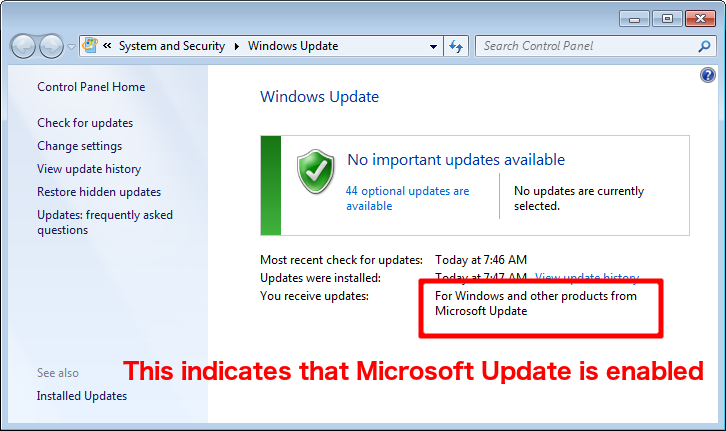

- Microsoft office updates used for spying windows 10#
- Microsoft office updates used for spying software#
- Microsoft office updates used for spying Pc#
If you run the same experiment on a metered network, Microsoft says no data is transmitted. On my AC-powered test system running on a wired network, that's roughly 32 connections every eight hours. Microsoft says the average size is 1.2K, which is certainly consistent with my experience.

Because I wasn't doing anything with this test system, there weren't any crashes or app installations to report, so those log files didn't change during the period I was measuring.Įach data transmission was small. That screenshot shows the DiagTrack component doing exactly what the documentation says it does, performing an initial performance measurement and then checking the contents of four log files every 15 minutes or so.
Microsoft office updates used for spying windows 10#
I used that PID to watch the activity of the DiagTrack service over the period of several days, using the built-in Resource Monitor tool on a virtual machine running Windows 10 Enterprise with a local account and the telemetry level set to Basic.

Microsoft office updates used for spying software#
This piece of information is useful for anyone who wants to monitor activities of the DiagTrack service using other software tools. To find the process ID (PID) for the service, look on the Services tab in Windows Task Manager. You can see the DiagTrack service in the Services console in Windows 10. Microsoft has engineered this component as a part of Windows. It runs as a Windows service with the display name DiagTrack and the actual service name utcsvc. Windows 10 includes a piece of software called the Connected User Experience and Telemetry component, also known as the Universal Telemetry Client (UTC). How does Windows 10 collect and transmit telemetry data? Most network analysis I've seen looks at all that traffic and doesn't isolate the telemetry data transmissions.
Microsoft office updates used for spying Pc#
It's worth noting that the telemetry data I describe here is only a small part of the routine traffic between a Windows 10 PC and various servers controlled by Microsoft. "The Bones of the System: A Case Study of Logging and Telemetry at Microsoft" will be presented at the International Conference on Software Engineering in September 2016. You can read about Microsoft's use of this technology in a paper co-authored by Titus Barik of the University of North Carolina and several individuals at Microsoft Research.

(My definition of "the software industry" includes not just Microsoft and Google but also companies like Tesla Motors, which uses vehicle telemetry to provide ongoing product improvements to its cars.) They're part of a larger trend in the software industry to collect and analyze event data as part of a shift to data-driven decision making. Telemetry features aren't unique to Microsoft and there's nothing particularly secret about them. Microsoft uses telemetry data from Windows 10 to identify security and reliability issues, to analyze and fix software problems, to help improve the quality of Windows and related services, and to make design decisions for future releases. Microsoft defines telemetry as "system data that is uploaded by the Connected User Experience and Telemetry component," also known as the Universal Telemetry Client, or UTC service. (That article has a convenient short link: aka.ms/ConfigureTelemetry.) What is Windows 10 telemetry? The most useful resource I found is a detailed technical paper written for IT pros and published in the TechNet Library: Configure telemetry and other settings in your organization. My research also included discussions with engineers as well as reviews of some thorough but obscure documentation. (PS: You won't believe what Apple's privacy policy says.) The usual suspects are trying to turn routine diagnostic information into another manufactured privacy controversy over Windows 10. Revealed! The crucial detail that Windows 10 privacy critics are missing


 0 kommentar(er)
0 kommentar(er)
